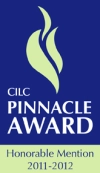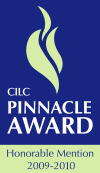Lots of people have been asking me about using Zoom to proctor exams. I’ve taught over 100 online courses, between the graduate courses I’ve taught for the Werklund School of Education and dozens of continuing education courses.
Combining that experience with research expertise in academic integrity, I can say that using Zoom to proctor written exams is a bad idea. Here’s why:
1. Zoom is not a substitute for a professional proctoring service
Professional proctoring services are sophisticated, both in terms of technology and operations. Asking an individual professor to proctor an online exam using Zoom as a makeshift solution is a bad idea. Most instructors are not trained on how to proctor online exams.
Given that some instructors are also working from home, while managing child care and family responsibilities, it is even less likely that they could do an excellent job of online invigilation, especially for a large class.
2. Creates additional technology barriers for students
Not all students have web cams or reliable Internet service. Requiring students to have cameras on and stream video during an exam could put some students at a technological disadvantage. If you suddenly require them to buy a web cam, you could be adding financial stress to the equation as well.
At our university, we cannot penalize students if they do not have a video camera. If you did not tell students at the time they registered for the course that a web cam would be required for the course, it is unethical to suddenly make it a requirement partway through the course. If we want students to act with integrity, we must demonstrate integrity in how we run our courses… Changing the rules as you go along just isn’t ethical.
3. Things are not always as they seem
My colleague, D’Arcy Norman, shared this post on how and why the video feed is not necessarily trustworthy. Go read his post. Watch his video. They try it yourself and see how easy it is to create a video background that makes it look like you’re in front of your camera when you’re not. (Hint: It is really easy.)
Besides, if an instructor suspects exam misconduct are they going to use Zoom as their evidence? How would they actually be able to prove it? I mean unless a student has crib notes out in plain view, the case management for that could get messy fast. Chances are high, I would say, that an allegation of academic misconduct could be dismissed (in the student’s favour) if the evidence is not strong enough.
There are few benefits and many potential complications with using Zoom to proctor written exams, especially for large classes. Of course, the exception to this would be individual oral exam where the student interacts in real time with the examiner. That could be do-able via Zoom. In the case of graduate student thesis defences, it may be the only option, but the examination committee must take steps to verify the identity of the student if they are not personally known to at least one of the examiners.
My recommendation is to consider alternate assessments if possible. If it is not possible, then consider a professional online exam proctoring service. Trying to use Zoom to MacGyver your exam invigilation of written tests is probably not going to serve the purpose of upholding integrity.
Note: This post was updated on April 13, 2020 to clarify that I am specifically referring to written exams in this post.
Related posts:
- E-Proctoring: Understanding the debate about invigilating remote exams
- The Impact of COVID-19 on Academic Integrity
- COVID-19, Contract Cheating and Academic Integrity in Online Courses: What you need to know
- Let’s Talk About the Other Pandemic: Academic Cheating
- New book! Plagiarism in Higher Education: Tackling Tough Topics in Academic Integrity
_________________________________________
Share or Tweet this: 3 Reasons why proctoring an exam using Zoom is a bad idea https://wp.me/pNAh3-2rO
This blog has had over 2 million views thanks to readers like you. If you enjoyed this post, please “like” it or share it on social media. Thanks!
Sarah Elaine Eaton is a faculty member in the Werklund School of Education, and the Educational Leader in Residence, Academic Integrity, University of Calgary, Canada. Opinions are my own and do not represent those of the University of Calgary.



 Posted by Sarah Elaine Eaton, Ph.D.
Posted by Sarah Elaine Eaton, Ph.D.  I am excited to be teaching one of my favourite courses this summer: Language Learning and Technology (EDER 669.73). This is a fully online course for students registered in the Master of Education (MEd) program at the Werklund School of Education.
I am excited to be teaching one of my favourite courses this summer: Language Learning and Technology (EDER 669.73). This is a fully online course for students registered in the Master of Education (MEd) program at the Werklund School of Education. This post showcases the work of students in Language Teaching and Technology (EDER 669.73), which is a Master’s of Education course. Students who take this course are enrolled in the Language and Literacy Specialization program.
This post showcases the work of students in Language Teaching and Technology (EDER 669.73), which is a Master’s of Education course. Students who take this course are enrolled in the Language and Literacy Specialization program. I am thrilled to share a new book chapter that’s just been published. The chapter is, “The impact of technology on how instructors teach and how students learn”. It part of,
I am thrilled to share a new book chapter that’s just been published. The chapter is, “The impact of technology on how instructors teach and how students learn”. It part of, 


You must be logged in to post a comment.